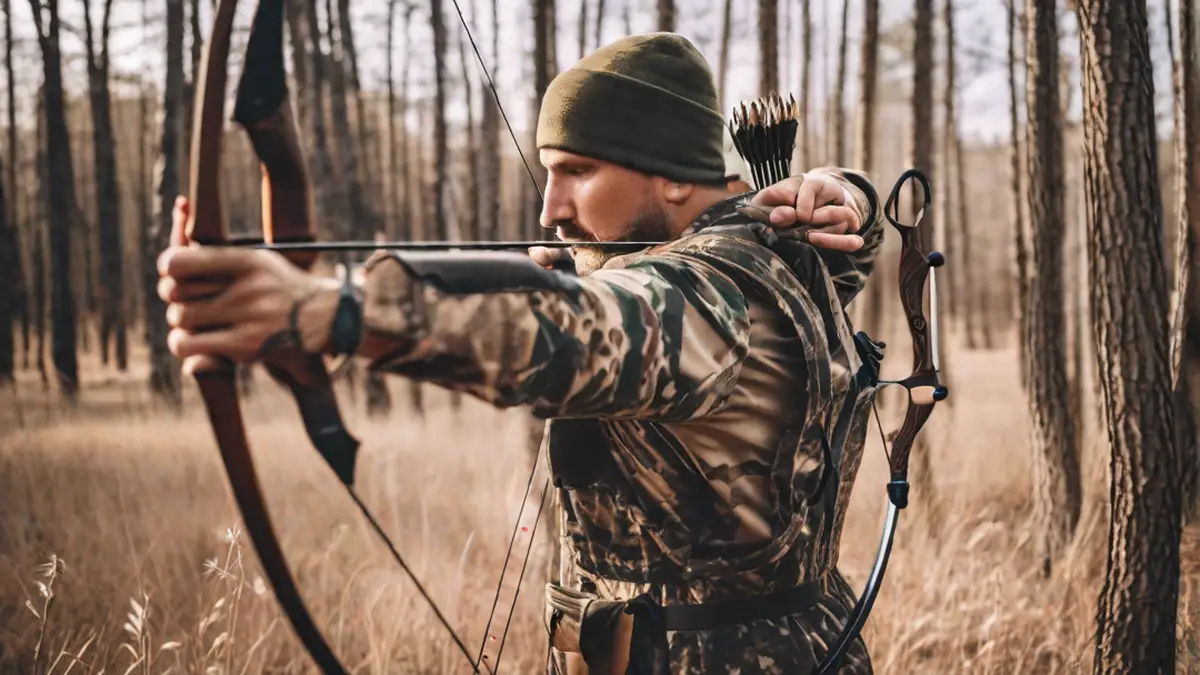As an avid hunter and bow enthusiast, one of the most important aspects of bow hunting that I have come across is understanding the legal draw weight requirements. The draw weight of a bow plays a crucial role in determining its effectiveness and compliance with hunting regulations. In this article, I will delve deep into the topic and provide you with all the essential information you need to know about the legal draw weight for bow hunting.
What is Draw Weight?
Draw weight refers to the amount of force needed to pull back (draw) the bowstring of a compound or recurve bow. It is usually measured in pounds (lbs). The higher the draw weight, the more force is required to shoot an arrow, resulting in greater speed and kinetic energy.
When it comes to bow hunting, the draw weight of your bow is significant for two main reasons: accuracy and ethical hunting. An appropriate draw weight ensures that your arrows have enough power to penetrate the animal’s vital organs, resulting in a humane and ethical kill. Moreover, a higher draw weight also increases accuracy, allowing for longer and more precise shots.
Legal Draw Weight Requirements
The legal draw weight requirements for bow hunting can vary depending on the state or country you are hunting in. It is essential to familiarize yourself with the specific regulations of your hunting jurisdiction to ensure compliance. Failure to abide by these regulations may result in legal consequences and possibly the loss of hunting privileges.
United States
In the United States, draw weight requirements for bow hunting vary from state to state. For example, in my home state of Texas, the minimum legal draw weight for bow hunting game animals is 40 pounds. However, other states may have different requirements. It is crucial to check with your state’s wildlife agency or consult the hunting regulations handbook for accurate and up-to-date information.
Other Countries
If you are planning to hunt outside of the United States, it is essential to research and understand the specific draw weight requirements of your chosen hunting destination. Each country has its own regulations when it comes to bow hunting, and these regulations may even vary within different regions of the same country.
For example, in Canada, most provinces require a minimum draw weight of 40 pounds for hunting big game animals. However, some provinces, such as Alberta, have higher draw weight requirements, with a minimum of 50 pounds for bow hunting. Always check with local wildlife authorities or consult the hunting regulations of the country you intend to visit.
Choosing the Right Draw Weight
While it is crucial to meet the legal draw weight requirements, it is equally important to choose a draw weight that suits your physical capabilities and hunting style. A draw weight that is too heavy can lead to fatigue and decreased shooting accuracy, while a draw weight that is too light may not provide adequate stopping power.
I recommend starting with a draw weight that you can comfortably handle and gradually increase it as your strength and shooting skills improve. This way, you can ensure that you are shooting with maximum accuracy and effectiveness. Consulting with a knowledgeable archery professional can also be beneficial in selecting the right draw weight for your needs.
Conclusion
Understanding the legal draw weight requirements for bow hunting is vital for both ethical hunting practices and compliance with hunting regulations. By familiarizing yourself with the specific regulations of your hunting jurisdiction, you can ensure that you are within the legal limits while enjoying the sport of bow hunting. Remember to choose a draw weight that suits your physical capabilities, and always prioritize humane and ethical hunting practices. Happy hunting!
